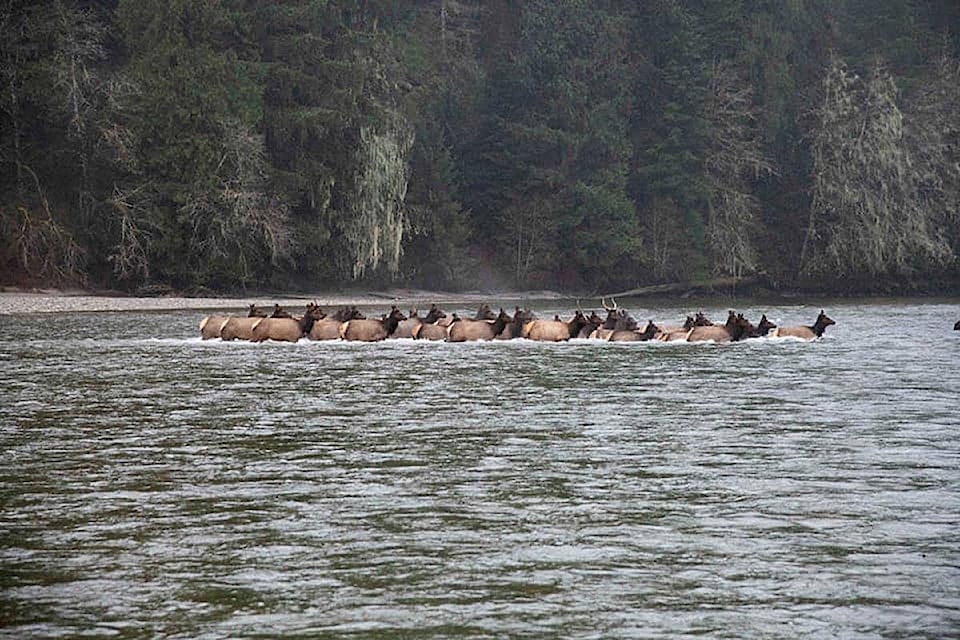A herd of Roosevelt Elk in the Upper Pitt River area should be getting better protection, but Conservation Officers are snowed into Maple Ridge by bear calls.
Human-wildlife conflicts, the vast majority of which involve bears, are keeping officers from doing other work to protect wildlife, said Sgt. Todd Hunter.
A small herd of 23 Roosevelt elk was reintroduced to the Upper Pitt River area in January 2005.
The Environment Ministry attempted to bring back a herd that was wiped out by overhunting in the early 1900s.
A decade later, the herd had almost tripled in size.
In 2015, the Environment Ministry allowed a small hunt for the first time.
Two tickets were issued on a limited entry hunting draw, and two other bulls allocated to the Katzie First Nation.
READ ALSO: Early polar bear swim for elk at Pitt Lake.
A herd of the elk was photographed in the water at the north end of Pitt Lake on Dec. 31.
READ ALSO: Elk thriving in Upper Pitt Lake
Images of the number of them suggest their reintroduction to the area about 15 years ago continues to be a success.
It was estimated then that there were 67-75 of them in the Pitt Lake area when the hunt resumed.
The lifespan of such elk in the wild is 12 to 15 years.
Darryl Reynolds, wildlife biologist with the B.C. ministry of forests, land and natural resources, said the elk in the Upper Pitt River area are doing well and that the herd has grown to 200.
“The numbers have grown,” he added.
‘It’s really nice to see wildlife recovery in the area.”
Reynolds also said the elk can’t move too far because of the terrain and that the area is a rich source of food for them with an abundance of grass, shrubs and small trees.
The annual allowable hunt is now 12 elk, with 51 per cent going to First Nations hunters, and the rest to other residents.
Hunter said the conservation service monitors the elk hunts and also does “proactive patrols in the Upper Pitt area to deter non-compliance.”
He said the sensitive population is subject to predation by wolves, poachers and over-hunting.
“There are all sorts of pressures they face.”
One was found after being shot and left to rot in a creek in 2016.
READ ALSO: Elk shot north of Maple Ridge and left in creek
There are currently two active investigations involving that herd, which Hunter said he is not able to discuss at this time.
Such investigations are an annual event, he added.
Hunter reiterated that people need to manage their garbage and attractants in cities, including Maple Ridge, to reduce human-wildlife conflicts.
He noted bears are still active and there have also been more sightings of cougars in the area.
In 2019, 14 bears were shot in Maple Ridge, and conservation officers are kept busy responding to public complaints.
READ ALSO: Shot bear has not been sighted, presumed dead
That reduces the amount of time they can dedicate to other conservation efforts, like protecting the Upper Pitt elk, said Hunter.
While it is a healthy population, the goal is to see the herd reach 160 animals.
Roosevelt is the largest species of elk in North America, and the largest adult bulls can stand 1.5 m at the shoulder, and weigh up to 500 kg.
In August of 2013, Roosevelt elk were photographed on the Lougheed Highway, near Kanaka Creek.
They have been frequently sighted in the Albion flats area, and environment ministry biologists also took that as a good sign that reintroduced elk are thriving.
